6 Best Places to Visit in Buddha Circuit Tour in Uttar Pradesh
Gautam Buddha wandered and preached his teachings in a lot of different places; Uttar Pradesh is one of the few fortunate states of India that saw the footprints of the awakened one all across its boundaries. In fact, four of the ‘Eight great Buddhist pilgrimages’ are in Uttar Pradesh, India. One can visit all significant destinations associated with Buddha through the Uttar Pradesh Buddhist Circuit tour. From the childhood home of Lord Buddha in Kapilvastu to their first sermon site at Sarnath; from their monsoon retreat in Shravasti to where they attained nirvana in Kushinagar, Uttar Pradesh has the most influential places associated with Buddha's life.
The Buddhist circuit tour in UP is your chance to explore the grand monasteries, historical and ancient stupas, and ruins of Buddhist sites. But more than just historical sites, it’s a chance to experience the serene echoes of Buddhist chants and trace the life of a Prince who left the materialist life and enlightened himself to grow over pain and suffering. This blog is a contemporary guide discussing 6 best places to visit in the Buddhist tourism circuit in Uttar Pradesh. A journey that follows the initial to final footsteps of Gautam Buddha in Uttar Pradesh, India.
These are the top five Buddhist Circuit Destinations in Bihar that you should definitely visit.
- Kapilvastu
- Sarnath
- Shravasti
- Kaushambi
- Kushinagar
- Sankissa
Kapilvastu (Piprahwa)
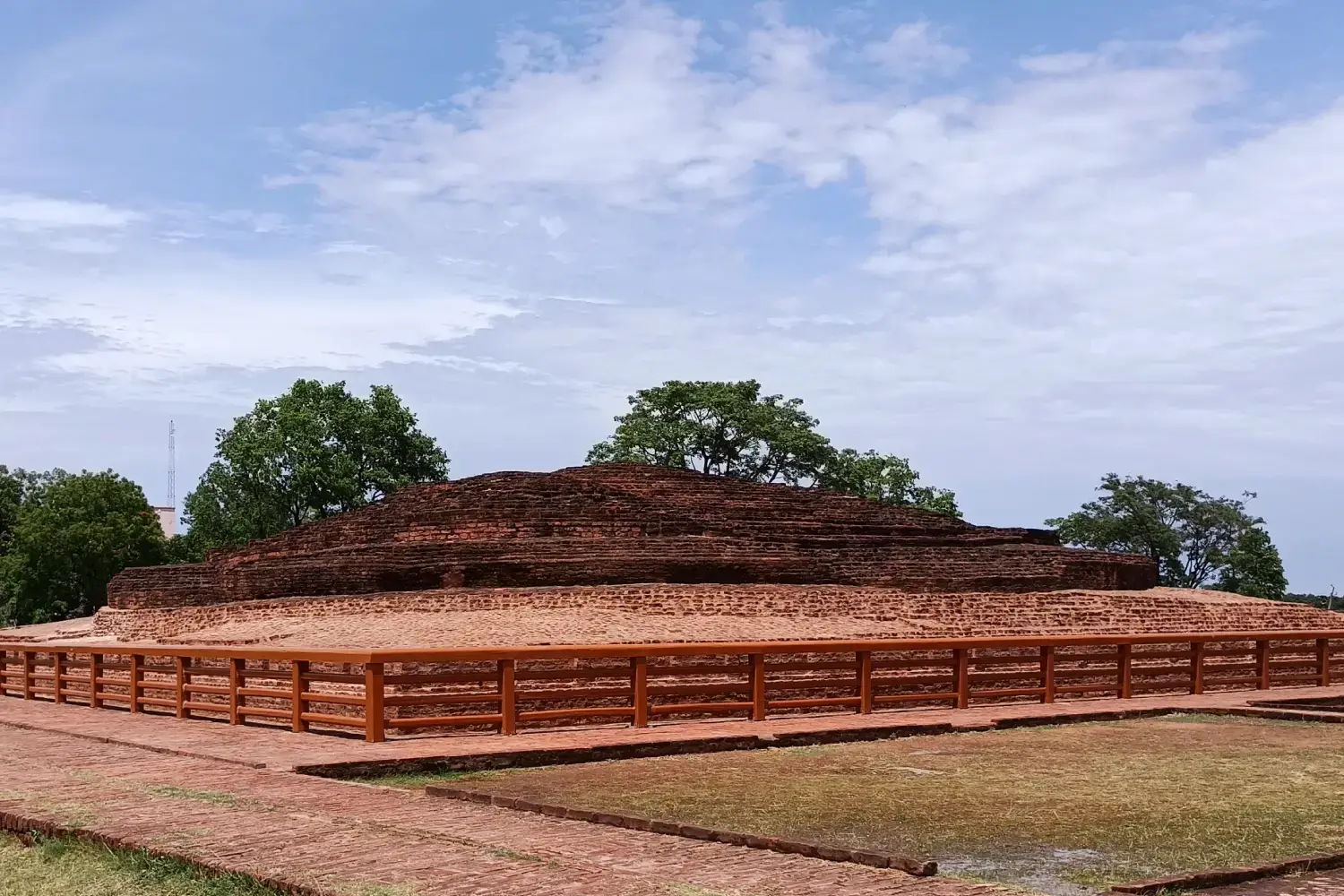
Prince Siddhartha, who would become the Buddha, spent his first 29 years in Kapilvastu, capital of the Shakya clan, located in what is now northern Uttar Pradesh in India. There, he lived with his parents, King Suddhodhana and Maya Devi. Though the modern Kapilvastu is divided between India and Nepal, it's believed Siddhartha resided in three different locations, one of which is in the Kapilvastu region of Uttar Pradesh. Gautam Buddha spent 29 years in this place, got married to Yashodhara and had a son named Rahul. At the age of 29, Prince Siddhartha pursued his urge to venture on an odyssey to experience pain and suffering, which led him to become Gautam Buddha.
An extensive archaeological excavation unearthed the earliest relic-casket from the ancient and medieval period. Various inscriptions in Brahmi script were retrieved which had mentions of the Buddhist stupa of Shakyamuni (Gautam Buddha).
Piprahwa and Ganwaria are the two major Buddhist sites of Uttar Pradesh in Kapilvastu. While Ganwaria used to be the residing complex of the Buddhist monks, Piprahwa was the center of religious pursuits. Piprahwa ancient Buddhist Stupa in Piprahwa is a big stupa with Buddhist relics unearthed from excavations. This stupa is also the burial place of one portion of Buddha’s ashes, given to the Shakya clan.
Archaeological site of Ganwaria has the ruins of ancient monasteries, palaces, residential complexes, and shrines. You can also find many other artifacts and relics in the Kapilvastu Museum.
Fa-Hien and Hiuen Tsang, 4th and 7th century Chinese travelers, also mentioned Kapilvastu of Uttar Pradesh as an untouched land from centuries that has a strong religious connection to Buddha.
Sarnath
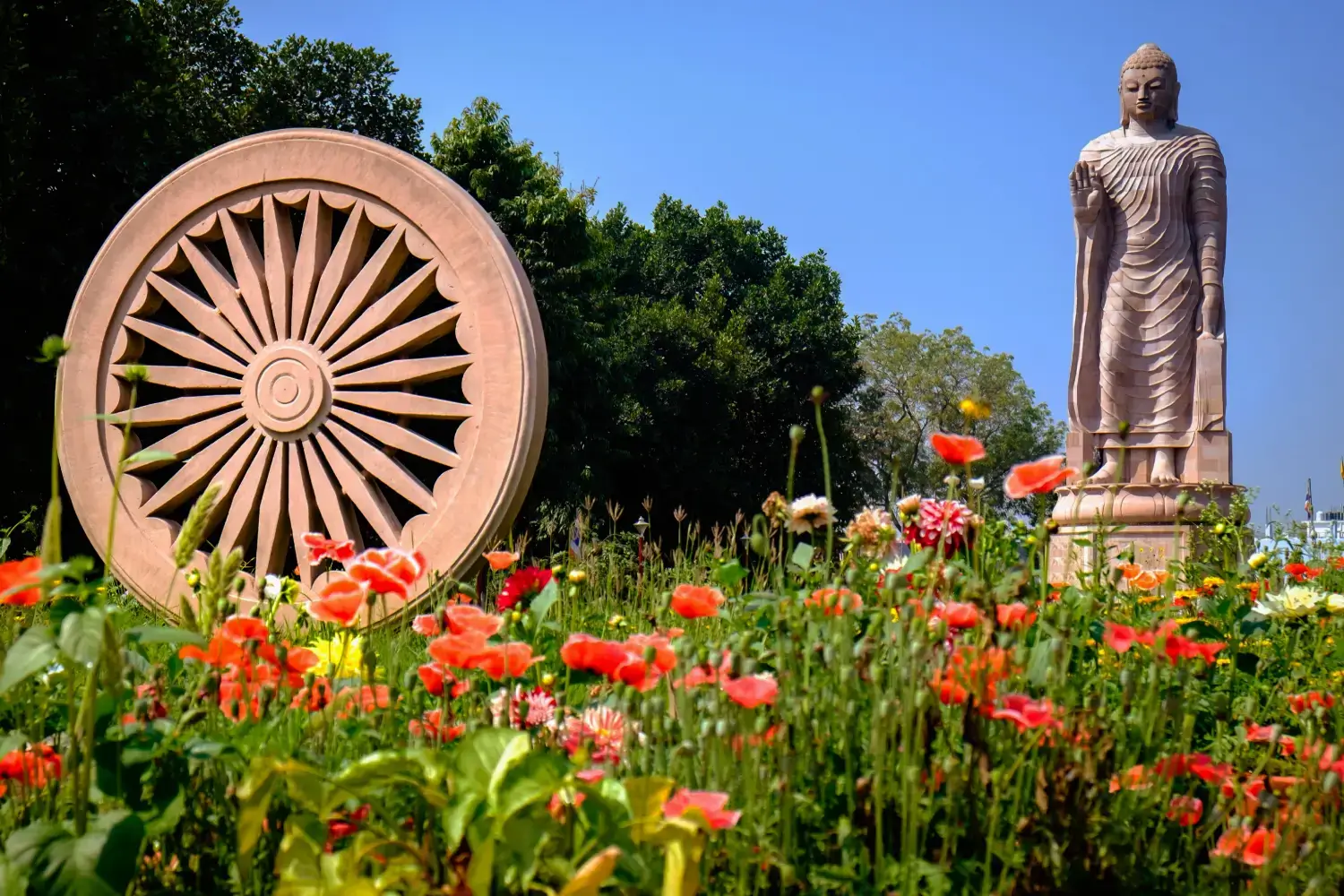
Soon after attaining enlightenment, Lord Buddha reached Sarnath and preached his core teachings to his first five disciples. This destination in Uttar Pradesh thus has the roots of hundreds of millions Buddhism followers present all around the globe. Due to the supreme holy significance of Sarnath, Buddhist followers including the great emperor Ashoka, erected a multitude of edifices that still recite the history with what is left of them.
Sarnath is loved by travelers, especially by the ones oriented towards Buddhism. It also enlists in the best places to visit in the Buddhist circuit tour in Uttar Pradesh. The Buddhist archaeological complex of Sarnath has a bulky 141-foot-tall ancient cylindrical stupa built in 249 BC, a wasted Ashoka Pillar, and ruins of many Temples, monasteries, and sanctums from 2nd BC to 5th century.
The Sarnath Museum is also a great place to explore history. It has more than 6800 artifacts including Buddhist sculptures, relics, and images; most of which are recovered from the excavation site of Sarnath. Sarnath also has a unique Buddhist edifice, Chauandi Stupa, a unique stupa which has an octagonal tower unlike the hemispherical top of other stupas.
Furthermore, experience peace at other Tibetan monasteries, take a serene walk at the Garden of Spiritual wisdom, and explore local culture and cuisines.
Shravasti
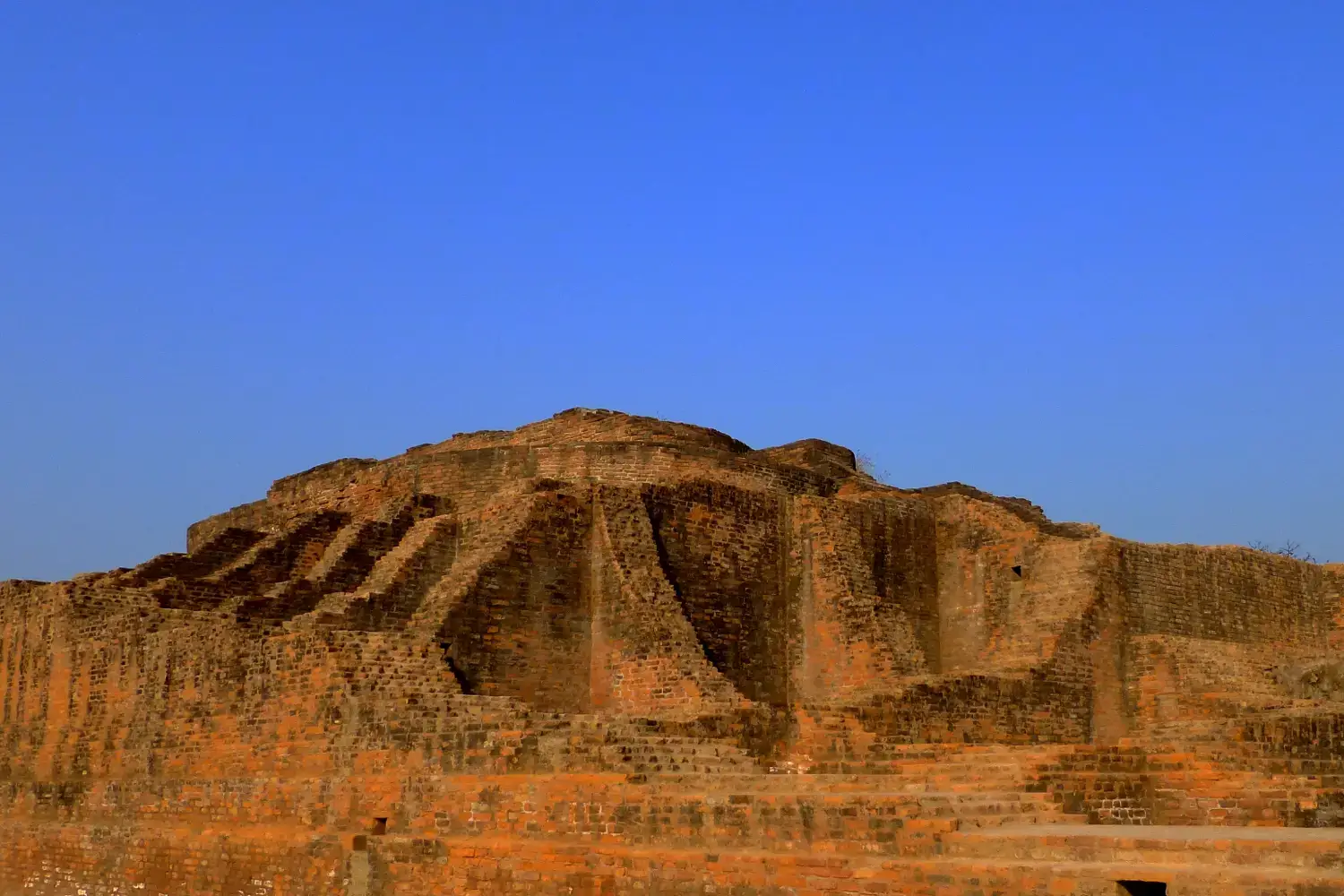
Every year during monsoon, Buddhist monks retreat for a few months from traveling, this is called Vassa. Gautama Buddha had spent much more time in Shravasti observing Vassa than any other place throughout his life. During his time in Shravasti, he preached most of his teachings which later were compiled as Sutras, the core texts of Buddhism. As the main scripture collection of Buddhism is given in Shravasti, this too makes it one of the most important Buddhist pilgrimage sites in Uttar Pradesh.
Excavation sites present at various places in Shravasti clarify the historical and religious importance of this place. The most important is the Jetavana excavation site which is also known as the Saheth Maheth Archaeological site. It was an ancient Buddhist city and has remains of various Buddhist complexes and structural remains of monastic cells with courts, artifacts and sculptures, inscription plaques in Brahmi script, terracotta, copper coins, etc. You can also see the Ananda Bodhi Tree, a Sacred Fig tree under which Gautam Buddha gave all of his teachings in Jetavana. Buddha’s monastery and Hut with their foundation and plinths stand uncovered at Jetavana.
Shravasti is encircled by edifices depicting Buddha's life. Angulimala Stupa, also known as Pakki Kuti, is the largest mound in Shravasti and has an interesting legend of Angulimal (a fierce dacoit) and Buddha’s encounter. Next to Pakki Kuti is another mound named Kacchi kuti which has remains from as old as 2nd century.
Daen Mahamongkol Temple is also a must visit Buddhist temple in Shravasti. It is beautifully architectured in a widespread area and has a grand temple building and a big Buddha statue in front. It is a popular meditation center of India, and visited by many spiritual souls in the world.
Kaushambi
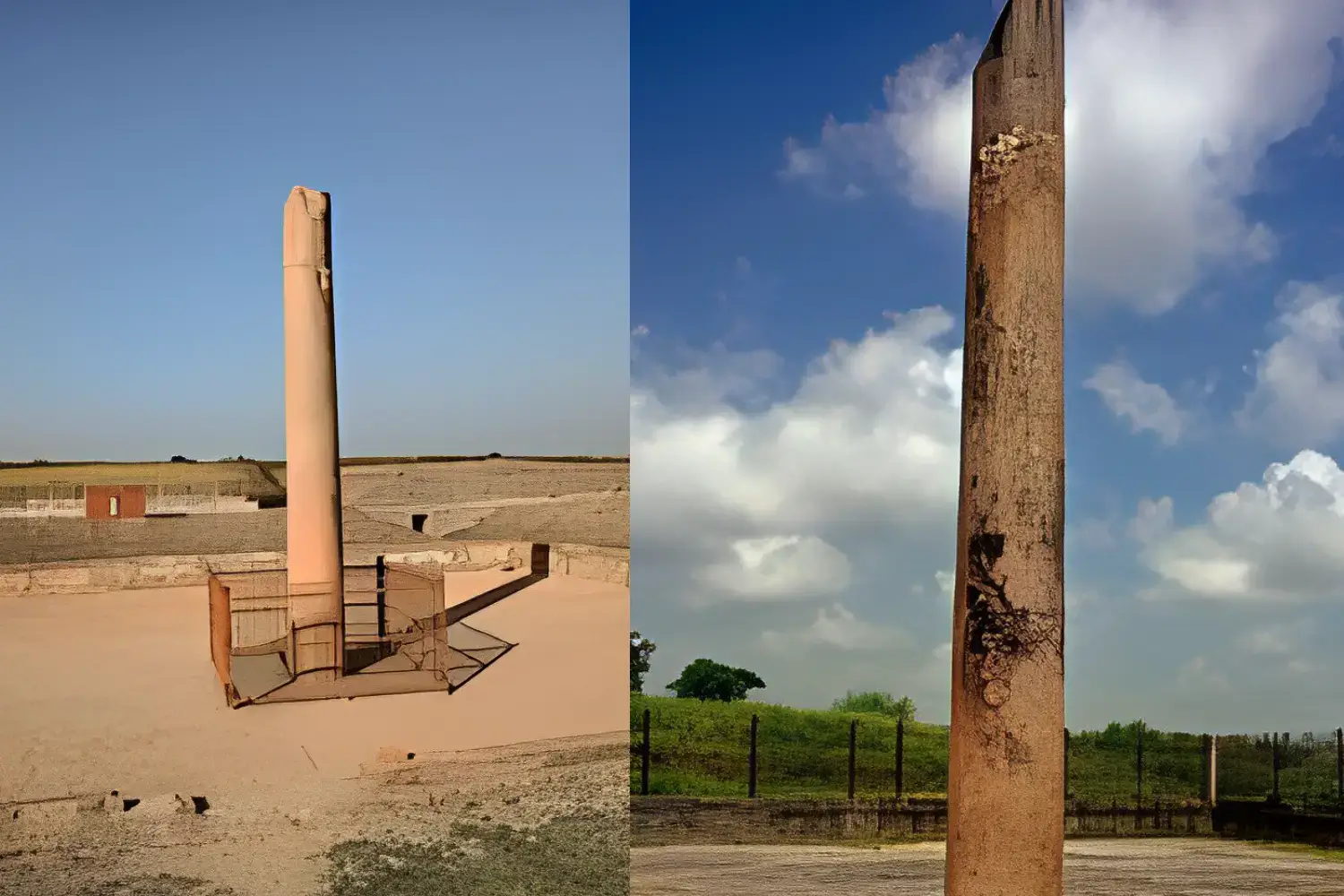
Kaushambi used to be the capital of Vatsa Kingdom, one of the sixteen most powerful kingdoms of the Indian subcontinent known as Mahajanpadas. During the 5th century BCE, Gautam Buddha used to visit Kaushambi many times to deliver sermons to their disciples after attaining enlightenment.
Archaeological excavations around the Kaushambi town helped retrieve significant evidence of Buddhism from ancient times. One of the most significant emergences was the Ghositarama monastery ruins. It lies scattered amidst the open fields. The walls of Ghositarama monastery are made of large sized bricks, which defines the architectural prowess of ancient times. It is believed that the Ghositarama Vihar was bestowed on the Gautam Buddha and his disciples by a local businessman of Kaushambi. At a point, Yamuna river used to flow just besides the site. Many artifacts from the excavation are stored and displayed at the Allahabad Museum in Prayagraj, 51 kilometers from Kaushambi.
The Ashokan Pillar built by the great preacher and emperor Ashoka in 232 BCE, is another famous buddhist center in Uttar Pradesh. The remains of this pillar define the influence of Buddhism, which was perceived by kings and emperors. The site of Ashoka Pillar is surrounded by ruins of complexes possibly made for spiritual perceivers.
Apart from the ancient ruins and archaeological sites, Cambodian Buddhist Temple is a new entrant in the vicinity of Kaushambi. Utterly colorful and equally beautiful, this shrine is built in east Asian style. The decorative work on the roof and walls of this Buddha Temple is done by Cambodian artisans. Also, the shrine has a Cambodian image of Buddha and is managed by Cambodian monks.
There are other few sites like some Hindu temples and the Old fort, along the river bank of Yamuna.
Kaushambi has yielded many relics and artifacts like coins, figurines and sculptures, punch-marked, and terracotta scriptures, but there are much more chances of further archaeological exploration, which perhaps will unearth more intriguing relics from the past.
Kushinagar
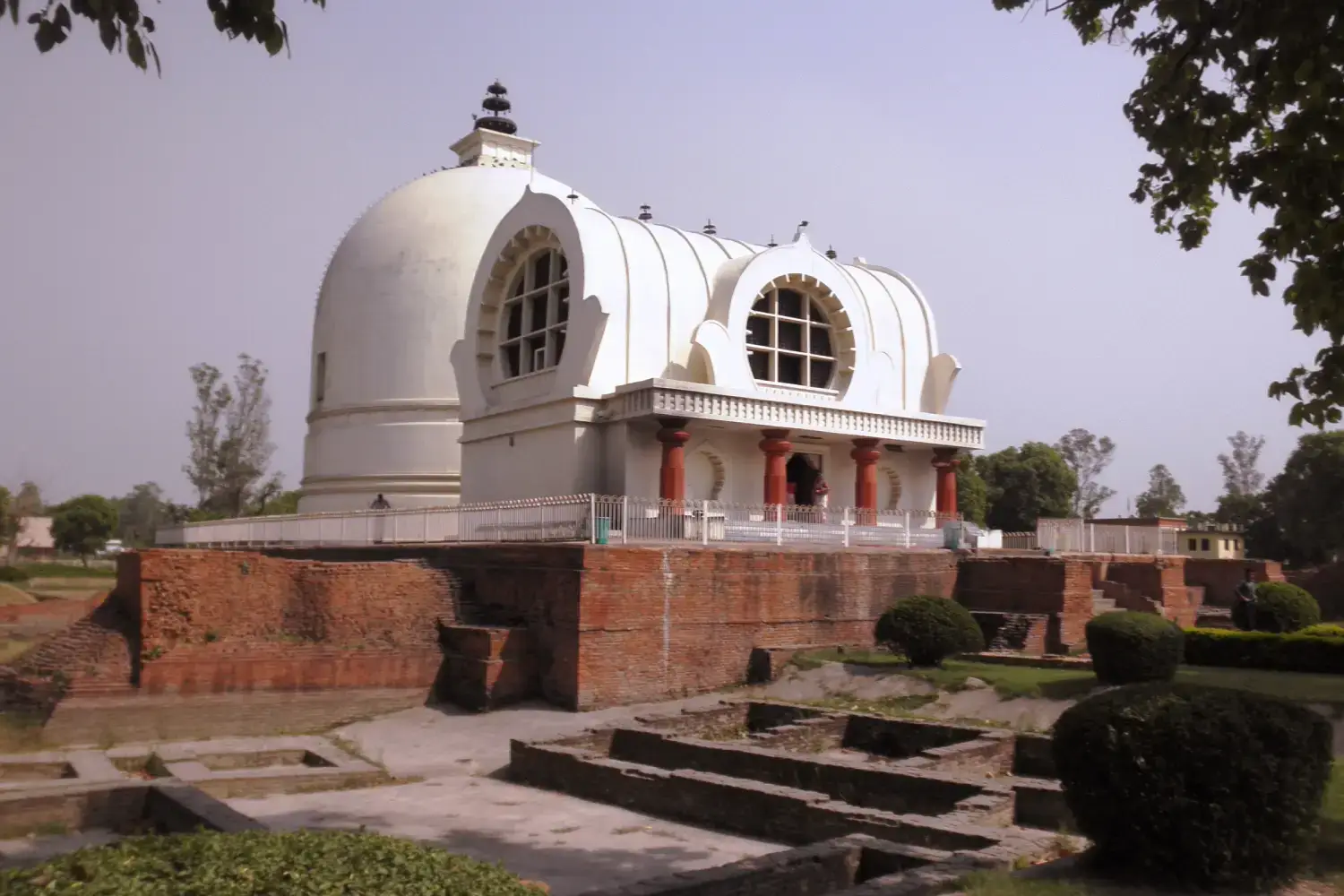
Kushinagar is one among the most sacred places for Buddhists all around the globe. This is the place Gautam Buddha did his last sermon and also attained Mahaparinirvana (freedom after death). The Mahaparinirvana Stupa, built at the exact place where Buddha took his last breath, is a highly popular Buddhist destination in Uttar Pradesh. Moreover, Kushinagar is a wealth for Buddhist religion having various significant and remarkable attractions.
According to the events, Lord Buddha came to Kushinagar after having his last meal in Shravasti. He attained his last sermon and also told his disciples about his nearing death. Matha Kuar Shrine is the place of his last sermon. The shrine has a simple design of a square courtyard surrounded by cells which served as student’s residence. A three-meter-tall Buddha statue in Bhumisparsha posture is placed here.
The center of attraction, Mahaparinirvana Temple, shrines a 6.1-meter-long Buddha statue in a reclining posture. The statue was recovered in pieces during excavation which were joined and placed where Lord Buddha took his last breath. The monolithic statue of Mahaparinirvana temple is placed over a sandstone couch with his head to the north. It is believed to be built during the Ashoka empire and introduced to additions by other kings. Rambhar Stupa is also an equally sacred by lesser famed Buddhist attraction in UP. This huge stupa, unearthed in 1910, is believed to be the cremation spot of Buddha. The mortal remains of were placed at the Buddha’s Relic distribution site in Kushinagar and were decided to distribute among eight kings.
There were many archaeological excavations done in and around Kushinagar from which more than 1300 recovered artifacts are displayed in the Kushinagar Museum. You can see stone, terracotta and bronze items, and coins from medieval times.
There are few temples from different countries in Kushinagar. The Chinese Buddhist Temple is a remarkably beautiful shrine with a blend of Vietnamese and Chinese architecture. The idol of Lord Buddha in this temple also has a Chinese style and depiction.
The Indo-Japan-Sri Lanka Temple is a unique shrine in Kushinagar with a golden statue made with eight metal alloy known as Ashta-Dhatu. The serene atmosphere enveloping this temple radiates a unique spirituality. There are many other Buddhist attractions which makes Kushinagar one of the best places to visit in the Buddhist Circuit tour of Uttar Pradesh.
Sankissa
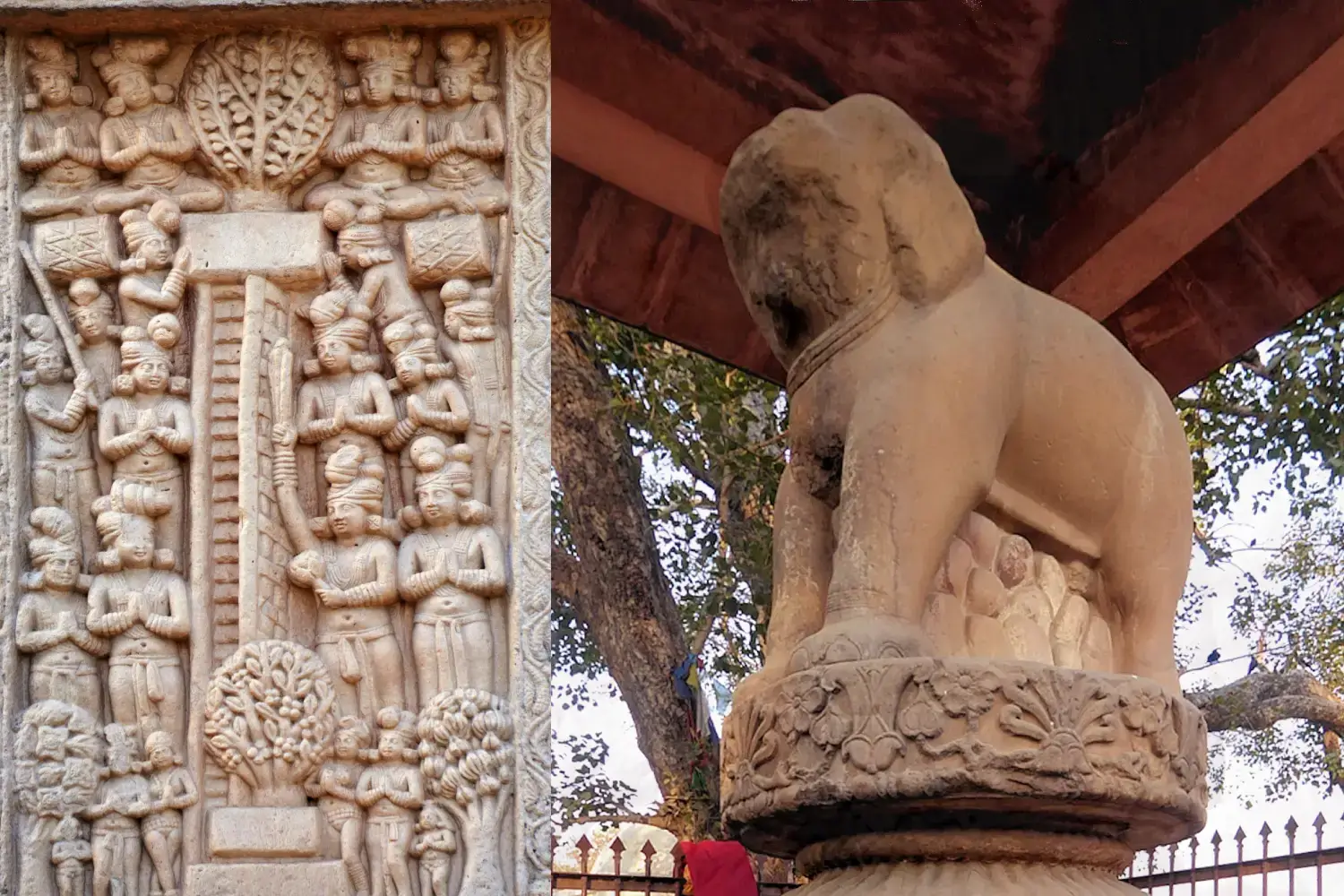
Sankisa or Sankissa, holds one significant place in the ‘Eight great places’ of the Buddhist pilgrimage circuit, in Uttar Pradesh and the world. The strong connection to Lord Buddha’s afterlife and popular beliefs are the reason many spirituality seekers and religious souls visit this town every year.
Sankisa is a small village away from the chaos in the south-eastern part of Uttar Pradesh. Criss crossing villages surrounded by lush green vegetation and old trees gnarled into arches over the streets. The major Buddhist site in Sankisa is the remains of Ashokan Pillar and the Mound. The Mound of Sariska has three flight staircases on three sides, which is believed to be older than two millennia. But what makes the town most special for Buddhists is the legend which is associated with lord Buddha. Lord Buddha performed the ‘Miracle of descending from heaven’ in Sankisa. According to Buddhist literature, Buddha climbed down through golden stairs accompanying two divinities - Indra and Brahma, holding a jeweled umbrella. This belief of Buddha’s descent is marked in places like Sanchi and Bharhut.
Sankisa was mentioned by two 7th century Chinese travelers - Fa Hian and Hwen Thsang as Song-kia-she and Kia-pi-tha in their written accounts. But gradually the popularity faded.
The town was re-discovered by Alexander Cunningham in 1842 and emerged as an Important Buddhist Pilgrimage Sites in UP. He started digging around the Ashokan pillar and found various things like terracotta figures, coins and stone artifacts.
Sankisa is also mentioned in Valmiki's Ramayan as Sankasya Nagar. It was ruled by Kushadhvaja, Sita's paternal uncle. Thus, Sankisa is a significant destination for both Hindus and Buddhists.
The impact of Gautam Buddha influences millions of people to embark on this odyssey to the Buddhist circuit tour in Uttar Pradesh, India every year. Each destination in this blog holds a great historical and cultural wealth of Buddhism. Throughout the tour you will be traversing through the life trails of Gautam Buddha, learning his teaching, and attaining a sense of mental peace for yourself.
You May Also Like to Read
- Best Places to Visit in Buddha Circuit Tour Uttar Pradesh
- Bihar Buddhist Circuit Tour- 5 Best Places to Visit
- Best Buddhist Places to Visit in North East India
- 10 Best Buddhist Temples to Visit in World
- Popular Buddhist Festivals in India
- Top Buddhist Destinations in India
- Popular Monasteries in India
- Top Buddhist Tourism Places to Visit in Madhya Pradesh
- Top Buddhist Tourist Places in Gujarat
- Popular Stupas in India
- Nepal Buddha Tour- Best Places to Visit
- Best Buddhist Places to Visit in Himachal Pradesh
- Odisha Buddhist Circuit Tour Places













